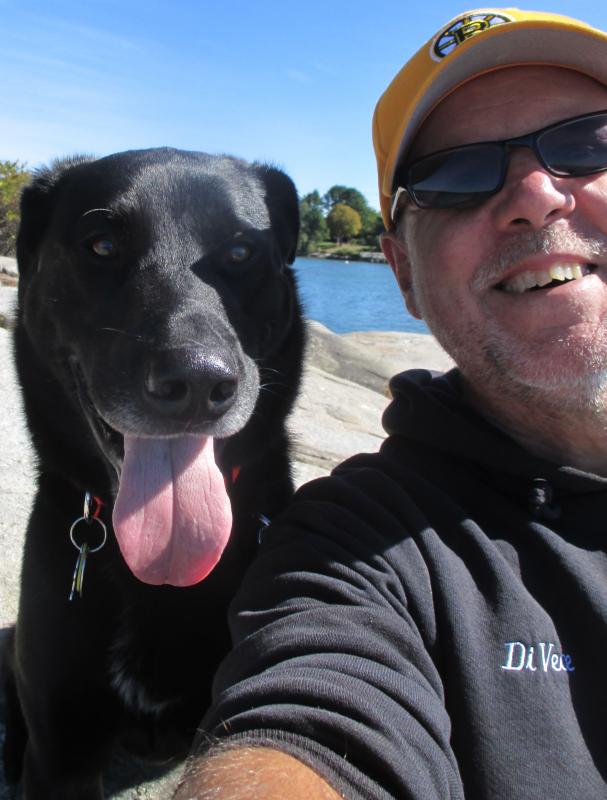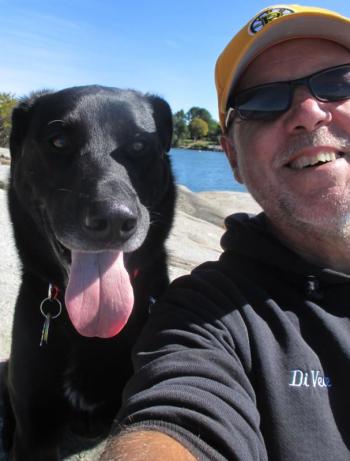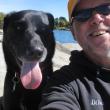Where dear friends show themselves
It’s Halloween, a time of growing darkness and spirits in the night. Wiscasset has its share of spooky tales: houses said to be haunted, witches and hobgoblins. There’s the legend of the Haunted Gully, the wooded ravine south of town where on moonless nights an Indian warrior, sharpened tomahawk in hand, is said to roam the woods searching for a head to replace his own shot off by a cannon during Colonial times.
Rather than go down that well-worn path, let’s instead revisit something I found a few years back in the Archives Room of Wiscasset Public Library. It was an old pen and ink document, unsigned and undated, neatly written in script offering a rather unusual theory on the meaning of the name Wiscasset. Nearly everyone agrees Wiscasset is of Native American origin. Its most popular interpretation was translated ages ago to mean either, “the confluence of three rivers” or “the meeting of the waters.” The geography certainly fits. Wiscasset harbor is formed where the Sheepscot River splits in two at the northern tip of Westport Island. The eastern branch of the river runs between Edgecomb and Westport, while its western branch called the Back River runs between Westport and Wiscasset. The third river body is where the waters converge and continue northward to Sheepscot Falls.
Of course, not everyone agrees with this interpretation. There are a number of others I won’t get into here. Instead let’s focus on the mysterious person who believed the name Wiscasset had an unearthly meaning to the early Native Americans. Here’s what he had to say:
“Their nomenclature here, we believe, has given permanent shape to their notions of Life after Death as the home of their kindred – the place of their dead – the haunts of their lingering yet departed ones. That the name has some ghostly significance in the language and mind of the Wawenock I have no doubt and probably in connection with this point, as an ancient burial site for the aboriginal dead. Wiscasset therefore may, and probably does, originate a locally notable (unusual and worth noticing) place where the departed love to linger; and in the mind of an aboriginal, a place of spiritual greetings, home gatherings of the dead in ghostly interchanges and may be translated a place where dear friends show themselves, land or place of rights, a name originating in pre-historic times.”
Pretty interesting, “place where the departed love to linger… a place of spiritual greetings, home gatherings of the dead in ghostly interchanges... where dear friends show themselves.” Autumn, when the days grow shorter and shadows are longest, seems like the time of year when these aboriginals would have gathered for their spiritual gatherings. Maybe they did so hoping to conjure up the spirits of lost loved ones.
As I said a moment ago, the source of this theory is a mystery. I think by the style of writing and syntax, it was likely written in the late 19th century and that Rufus King Sewall of Wiscasset may have been the author. Among his many talents including that of clergyman, lawyer, civic leader, and scholar, Mr. Sewall was a noted historian of Maine’s early history including its prehistoric period. He published a number of books; two of his best-known are: “Ancient Dominions of Maine” published in 1859 and “Ancient Voyages to the Western Continent” in 1895. The latter devotes several fascinating chapters to Damariscotta’s famous Shell Mounds on Glidden Point and contains a map of the region showing where the earliest excavations took place along with some early photographs.
Among Mr. Sewall’s theories is one suggesting there were people living here on the Maine coast long before the Micmac and Abenaki tribes. It was Mr. Sewall who told us of an ancient burial place near Wiscasset on the wooded hump-backed island in the Sheepscot River. Known as “Goose Island” because it resembles a goose in flight during low tide, the island can be seen upriver from Donald E. Davey Bridge linking Wiscasset to Edgecomb. In 1870, during construction of Knox & Lincoln Railroad, workmen were removing fill from the island to use for the causeway when a human skull was unearthed. After learning of the find, Sewall investigated, and discovered the body of a man. He had been interred on the island’s summit in a “sitting position,” similar, Sewall wrote, to graves found near Damariscotta’s famous shell mounds. Rufus King Sewall chronicled his findings in several articles appearing in the Sheepscot Oracle, a weekly newspaper printed in Wiscasset in those days. Five graves were later found on the island. Sewall studied the remains and believed they predated the arrival of the Pilgrims by over two centuries.
Phil Di Vece earned a B.A. in journalism studies from Colorado State University and an M.A. in journalism at the University of South Florida. He is the author of three Wiscasset books and is a frequent news contributor to Wiscasset Newspaper and Boothbay Register. He resides in Wiscasset. Contact him at pdivece@roadrunner.com

























